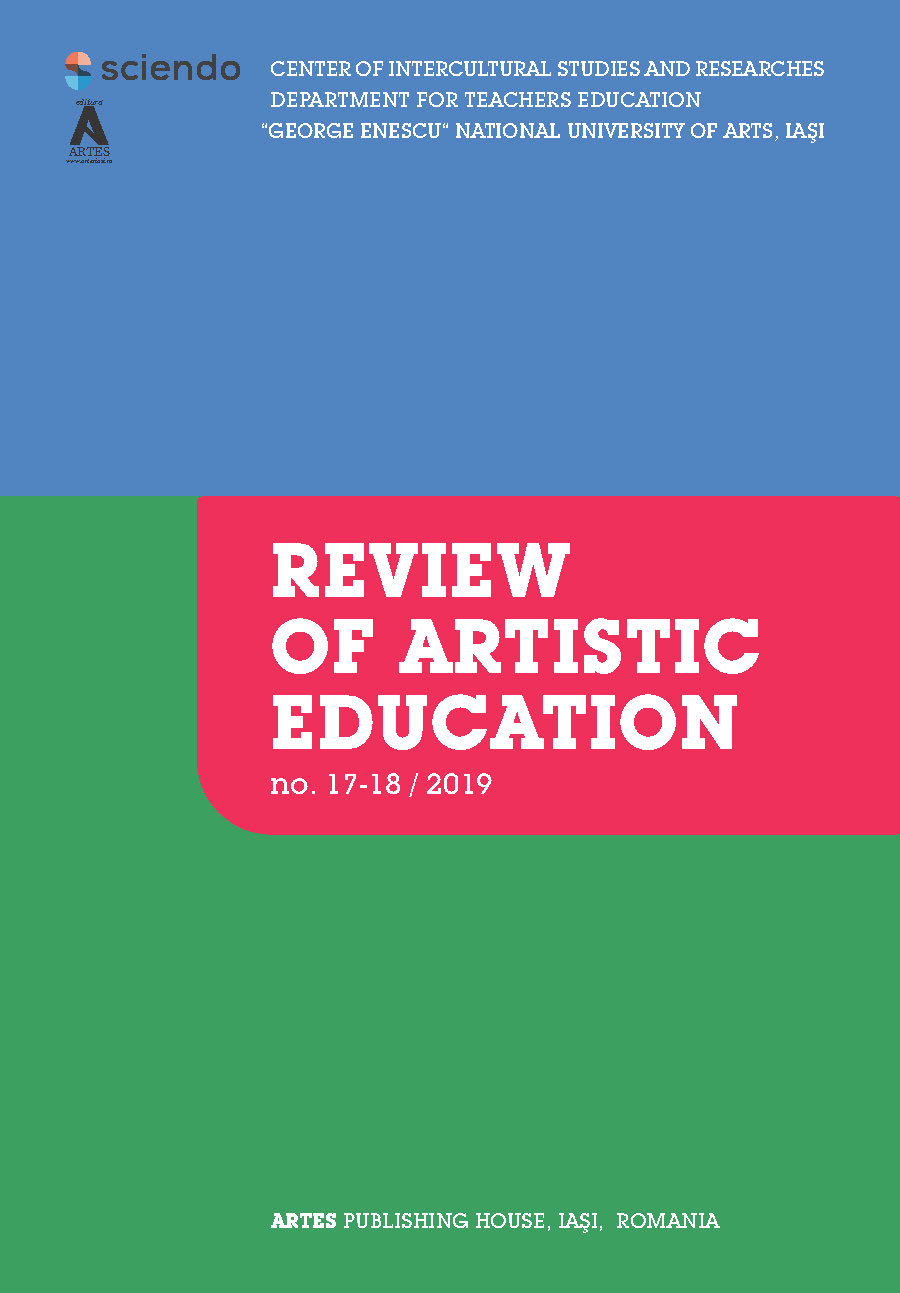THE EFFECT OF PITCH HEIGHT, TIMBRE AND OCTAVE ERROR ON ABSOLUTE PITCH ACCURACY. EDUCATIONAL IMPLICATIONS
THE EFFECT OF PITCH HEIGHT, TIMBRE AND OCTAVE ERROR ON ABSOLUTE PITCH ACCURACY. EDUCATIONAL IMPLICATIONS
Author(s): Dorina Geta Iușcă Subject(s): School education
Published by: Editura ARTES
Keywords: absolute pitch accuracy; pitch height; pitch chroma; octave error; timbre;
Summary/Abstract: The accuracy of absolute pitch has often fallen into mythical perspectives, as this rare ability tends to fascinate people through its spectacular results. Many people tend to think that a musician with absolute pitch is always capable of identifying the musical note of any sound in any circumstances. The research literature has revealed that this is rarely true. Although there is a significant difference between real absolute pitch owners and pseudo-absolute pitch owners, the accuracy of absolute pitch is highly influenced by a series of musical factors such as: pitch chroma, pitch height and musical timbre. Therefore, it has been proven that the best absolute pitch accuracy manifests for medium pitch sounds, while very high or very low sounds tend to often be misidentified. Even more, absolute pitch owners tend to make an unusual mistake of misidentifying the octave. The familiar sounds (for example from the instrument the musician has studied in childhood) tend to produce less identification errors. Nevertheless, the piano timbre is usually associated with the best accuracy of absolute pitch. The aim of the present research is to synthetize up-to-date literature regarding the way these factors influence the accuracy of absolute pitch. The study focuses on the idea of normalizing the general perspective of absolute pitch accuracy, as musicians and teachers often tend to have very high expectations regarding this ability. The educational implications of the new perspective drawn here contribute to a better relation between teachers and students, as well as to a better understanding of this interesting musical ability.
Journal: Review of Artistic Education
- Issue Year: 2019
- Issue No: 17+18
- Page Range: 353-358
- Page Count: 6
- Language: English
- Content File-PDF

